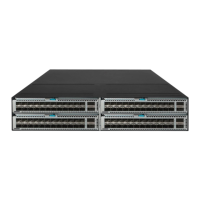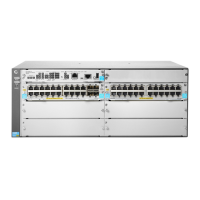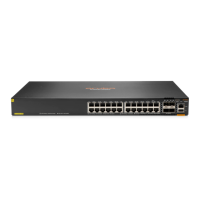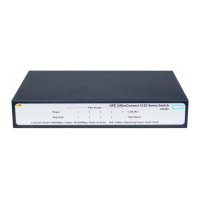159
Configuring server-assigned MAC-based VLAN
Step Command Remarks
1. Enter system view.
system-view
N/A
2. Enter Layer 2 Ethernet
interface view.
interface
interface-type interface-number N/A
3. Set the port link type to
hybrid.
port link-type
hybrid
By default, all ports are
access ports.
4. Assign the hybrid port
to the MAC-based
VLANs.
port hybrid
vlan
vlan-id-list {
tagged
|
untagged
}
By default, a hybrid port is an
untagged member of the
VLAN to which the port
belongs when its link type is
access
.
5. Enable the
MAC-based VLAN
feature.
mac-vlan enable
By default, MAC-based VLAN
is disabled.
6. Configure 802.1X or
MAC authentication.
For more information, see Security
Command Reference.
N/A
Configuring IP subnet-based VLANs
In this method, untagged packets are assigned to VLANs based on their source IP addresses and
subnet masks. A port configured with IP subnet-based VLANs assigns a received untagged packet
to a VLAN based on the source address of the packet.
Use this feature when untagged packets from an IP subnet or IP address must be transmitted in a
VLAN.
This feature is available only on hybrid ports, and it processes only untagged packets.
An IP subnet-based VLAN has one or multiple subnets to match inbound packets. Each subnet has
a unique index in the IP subnet-based VLAN. All subnets in an IP subnet-based VLAN have the
same VLAN ID.
To configure an IP subnet-based VLAN:
Task Command Remarks
1. Enter system view.
system-view
N/A
2. Enter VLAN view.
vlan
vlan-id N/A
3. Associate the VLAN
with an IP subnet or
IP address.
ip-subnet-vlan
[ ip-subnet-index ]
ip
ip-address [ mask ]
By default, a VLAN is not associated
with an IP subnet or IP address.
A multicast subnet or a multicast
address cannot be associated with a
VLAN.
4. Return to system
view.
quit
N/A

